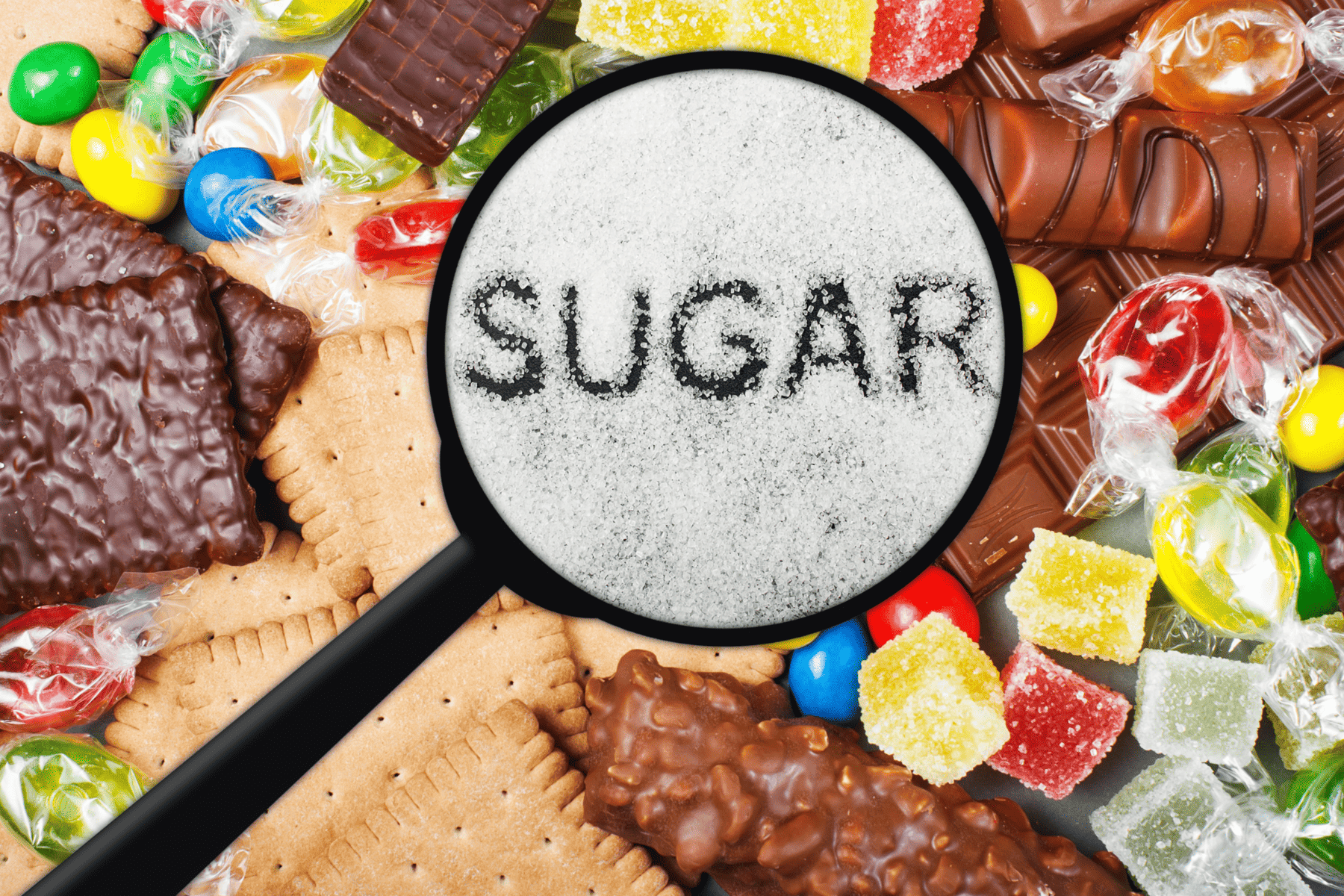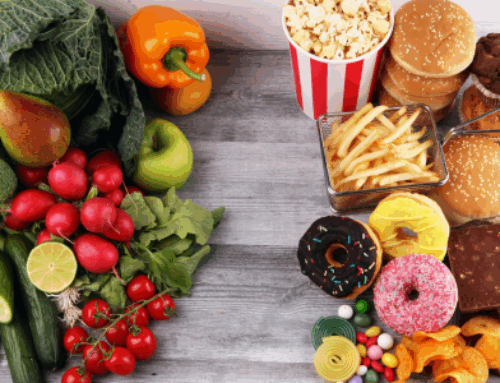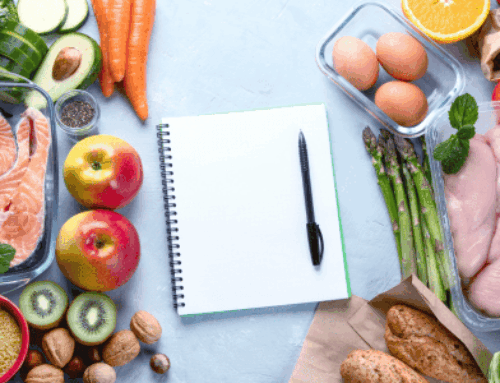
Quitting sugar is one of the most popular nutritional changes that people are making these days.
And for good reason – an excess intake of sugar is linked to the development of tooth decay, diabetes, chronic disease and more. Celebrities, chefs, and nutritionists alike are encouraging us to remove the ‘white stuff’ from our diet as a means to improve our long-term health. But it’s not easy.
Despite all the warnings and health claims over the past few years, many people have failed dismally in their sugar-quitting attempts. They might do great for a little while, but something, a social occasion or entire season (Christmas) pops up, and all their good intentions are gone and the sugar consumption comes back with a vengeance. Many people have reported to me that they successfully quit sugar for a few months only to find that it all creeps back in and they’re eating more than they were before they quit sugar in the first place.
What is going on? Why is it not sustainable for everyone?
Based on my years of experience working with clients, this is why it’s so much of a struggle. Here are eight mistakes that people make when they try to quit sugar:
They cut out fruit
Some ‘sugar quitting’ programs suggest cutting out all sugars, to begin with, including fruit, as a way to ‘detox’ or ‘re-set’ your system. This is not necessary and completely made up. Your body is not a computer. It does not have a ‘re-set’ button. Some experts demonise fruit completely. This too is not supported by evidence.
You don’t need to cut out fruit. Yes, it does contain sugar, but it contains the right amount, in the perfect package, for delivery into your body. Fruit is a great source of dietary fibre, with one large piece offering between 3-5 grams (16% of our total fibre needs). They’re also rich in vitamin C (an antioxidant) plus a range of other vitamins and minerals – each fruit offering an element of nutrition a little different from the next.
You can eat too much, but you’ll experience diarrhoea pretty quickly if you do and most people don’t! You don’t need to cut it out but you certainly don’t need to build your whole diet out of it. 2-3 serves of fruit per day is plenty. You may like to eat a little more if you’re very active.
Here are my fruit consumption guidelines:
Eat fruit whole and fresh as opposed to blended, juiced and dried. These processing techniques concentrate the sugars and make fruit easier to over consume. Use your teeth as the processing equipment as much as possible! Consume fruit according to your activity levels. If you need help determining what that is, seek help from a dietitian.
Reduce the sugar from your diet by minimising your consumption of:
- All fruit based juices (blended, cold-pressed, juiced, organic)
- Dried fruits, especially ones that list added sugar on the ingredients list
- Processed fruit and whole foods bars. Just because the sugar comes from dates, it’s still sugar and many of these ‘healthy’ bars are just as sugar-rich as a chocolate bar.
These foods are absolutely fine to enjoy on occasion.
They become afraid of packaged food
Depending on your personality, putting strict rules in your life around cutting out sugar usually results in one of two things: You either rebel against yourself and binge on sugar regularly or you become obsessive about every single food that crosses your lips, unnecessarily cutting out nutritious foods that don’t need to be.
I’ve had clients fret over the sugar listed on the nutrition information panel of a tin of tuna or 4 bean mix. Being pedantic about every gram of sugar listed on a packet’s nutrient panel will lead you to eliminating perfectly healthy processed foods. Healthy packaged food does exist.
It’s a popular approach within the field to recommend removing foods in a packet from the diet. The approach is called ‘clean eating’. I don’t believe everything in a packet is ‘dirty’ and needs to be removed. In fact, lots of nutritious foods are bought in packets. Be a savvy shopper and start with reducing the obvious foods first.
Here are my processed food reduction guidelines:
Start with reducing your consumption of the foods below. They have high amounts of added sugar or sweetener and very little nutrient value.
- Soft drink and diet soft drink
- Lollies and diet lollies
- Cordial and diet cordial
- Milo, hot chocolate and other milk flavourings
- Chocolate, strawberry and other flavoured milks
- Hot chocolates, frappes, caramel lattes, chai lattes
- Mousse, custard, highly sweetened yoghurts, ice-cream and other dairy desserts
- Chocolate
- Cakes, biscuits, pastries, slices, doughnuts and baked sweets (bliss balls, paleo recipes and un-refined sugar included)
- Alcoholic drinks – especially mixed drinks and cocktails
These foods are absolutely fine to enjoy on occasion.
They cut out milk and yoghurt
Sugar naturally occurs in milk, this means that it’s also naturally present in milk products such as yoghurt and cheese. This sugar is called lactose and for those of us without the enzyme to digest it, it gives us diarrhoea. How pleasant. Sorry about the poo talk.
You don’t need to worry about the sugar present in plain milk and natural yoghurt. Even when it’s reduced fat or skim. Dairy is perfectly fine to consume as part of a balanced diet if you don’t have an allergy or intolerance.
There is a common myth going around the internet that skim milk contains added sugar. It doesn’t. When you remove the fat from milk, you take away about 4% of it. This concentrates the other nutrients making skim milk slightly (a tiny bit) higher in sugar, protein and it’s other nutrients like calcium. This increases the sugar content of skim milk by 0.2g per 100g of milk compared to full-cream milk. Check the ingredients of skim milk next time you go shopping. It will look something like this. Ingredients: Skim milk.
When we start to look at milk products with added sugar like flavoured milks and super sweet yoghurts, you can start reading labels and making smart choices.
My dairy consumption recommendations:
- Aim to consume 2-3 serves of dairy per day. 1 serve is 1 cup of milk or 150 of yoghurt.
- Sweeten greek or natural yoghurt with fruit or honey. That way you control how much extra sugar is added if you like it to be sweet. This is absolutely ok.
- If you avoid dairy for an allergy or intolerance, seek help from a dietitian for other ways to meet your calcium requirements.
They become paranoid about every sugar
Did you know that almost every single food you eat contains at least a small amount of some kind of sugar? Yep. So if you were truly ‘quitting sugar’ you’d technically need to stop eating almost everything. And that’s ridiculous. However, many people find themselves very confused when they realise their ¼ of a medium sized capsicum contains 3g of sugar! Oh no! Should they stop eating that? Not at all!
Sugar naturally occurs in all vegetables, fruits, legumes, nuts, seeds, milk, yoghurt and cheese. You’d pretty much need to live off meat and chicken (please DON’T do that) to truly ‘quit’ sugar. And that is NOT a healthy diet.
Don’t be afraid of the sugar in your whole foods. Your body actually needs this sugar to remain healthy, believe it or not and the sugar you get from these foods is the perfect type and amount that you need.
They start believing other random advice from certain ‘wellness’ experts
I’ve read all kinds of ridiculous nutrition advice on some ‘sugar quitting ‘ blogs. It’s such a shame because the sugar reduction message gets lost in the muck of all this other garbage that you truly don’t need.
Get your nutrition advice from a qualified professional in the field of nutrition, who isn’t sending you off to a random website to buy a product that they get a commission from!
They don’t eat enough vegetables
Good nutrition is more about what you DO eat, rather than what your DON’T. Yes, you may remove all the high sugar, poor nutrient foods from your diet; but if you don’t eat more nourishing, whole, nutrient dense foods instead, your body is still not going to be any healthier. Your body needs nutrients: vitamins, minerals, fibre – you must eat foods rich in these daily. Think about increasing nourishing foods as priority.
So, if you’re looking at reducing your sugar intake, make sure you ‘up’ your intake of vegetables at the same time. Vegetables are the most nutrient dense foods – packed full of nutrition for very little energy. Go nuts!
They eat too much fat
Along with the ‘quit sugar’ message came the ‘fat is good for you’ message. And after years of most of us thinking low-fat diets are the way to go, the relief that we can now indulge in pork belly, bacon, cheese and avocado was almost too much to contain!
It’s true, as the field of nutrition has matured and research progressed, we now know that fat, in particular saturated fat, is not as bad as we once thought. However, before you go all nuts for the lard and coconut oil on your next shopping spree, read on. It’s not all rainbows, unicorns and bacon. You can still consume too much fat.
In addition, a high-fat consumption is only ok if your overall diet quality is good. Meaning, if you consume lots of fresh, whole vegetables, a few fruits, whole nuts and seeds, a few legumes, a little grains and whole meats and dairy – then a pork belly burger or butter-laden Brussel sprout is not going to give you an instant heart attack.
The problem with only focusing on a single nutrient, like fat or sugar, is that we can neglect to see the forest for the trees. In other words, we lose sight of the fact that the single biggest predictor of long-term good health is consistent overall diet quality, not an individual food or nutrient consumed on one occasion.
The science shows us that our diets can go between two extremes: high sugar or high fat. Both have been shown to increase risk of disease.
My fat intake recommendations:
Enjoy in moderation as part of a balanced diet, rich in vegetables:
- Nuts
- Seeds
- Avocado
- Extra-virgin olive oil
- Coconut oil
- Other nut and seed oils
- 100% nut or seed butters
Foods that can be enjoyed on occasion in small amounts as part of a balanced diet, rich in vegetables:
- Cream
- Butter
- Margarine
- Mayonnaise
- Aioli (my favourite all time thing)
- Sauces and salad dressings
They don’t eat enough throughout the day
There is nothing harder than trying to give up sugar and then feeling the beckoning call of an office chocolate fund-raiser box at 3pm whilst your stomach is rumbling for food.
The biggest mistake, in my opinion, that people make when quitting sugar or trying to eat healthily is restricting their overall food intake too much. This leads them to feeling tired, grumpy and hungry in the afternoon and sure enough, “knock, knock, knock” the sugar cravings arrive!
There is no point eating small amounts of healthy, whole foods, if you’re only going to binge on sugar-rich foods later. Instead, fill up on whole foods, feel satisfied on them and you’ll find yourself in a much better position to say ‘no thanks’ to the unhelpful foods and make healthier choices, especially in the afternoons and evenings.
Need help with unpacking what healthy eating looks like for you? Book a free intro session to find out how we can help.






